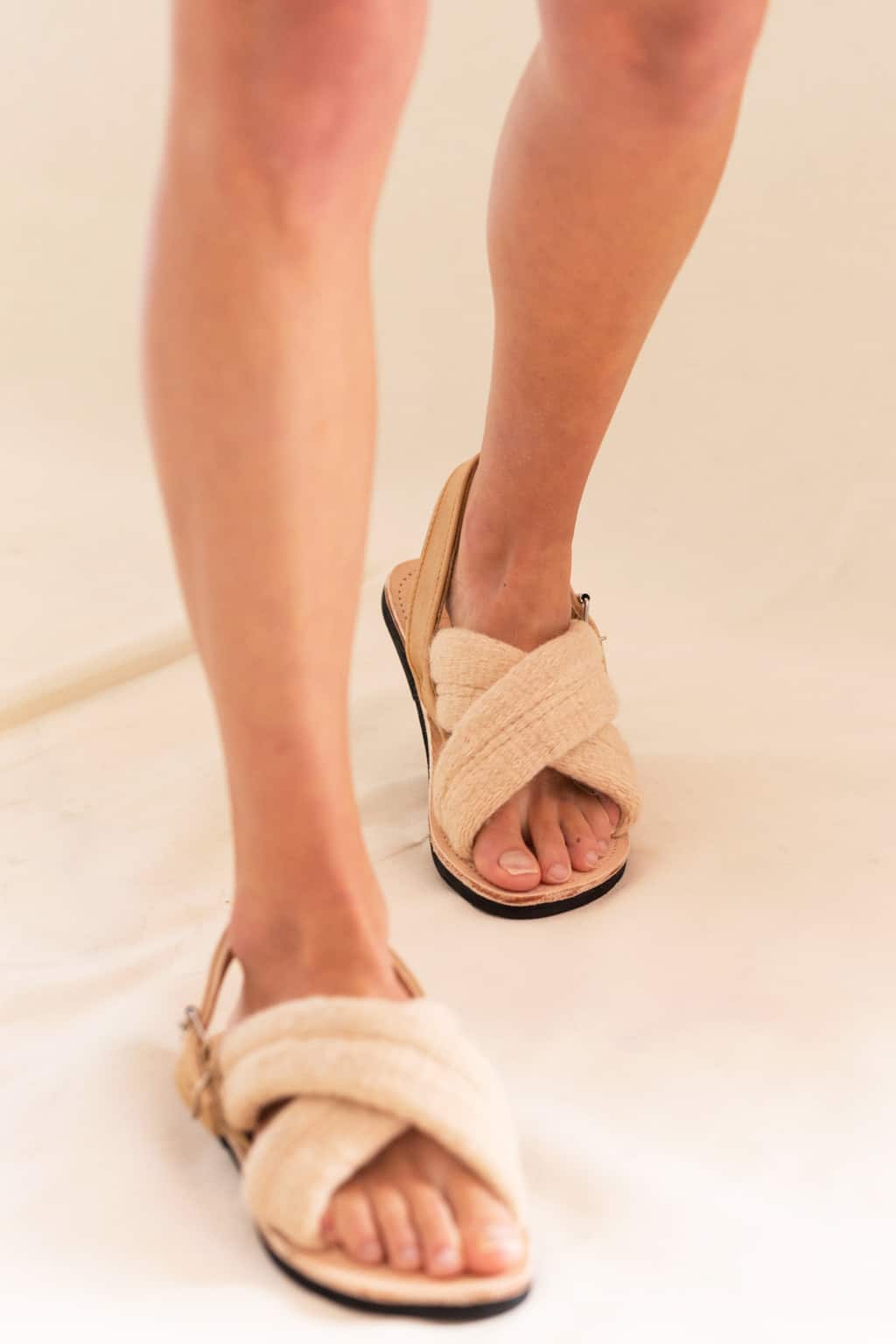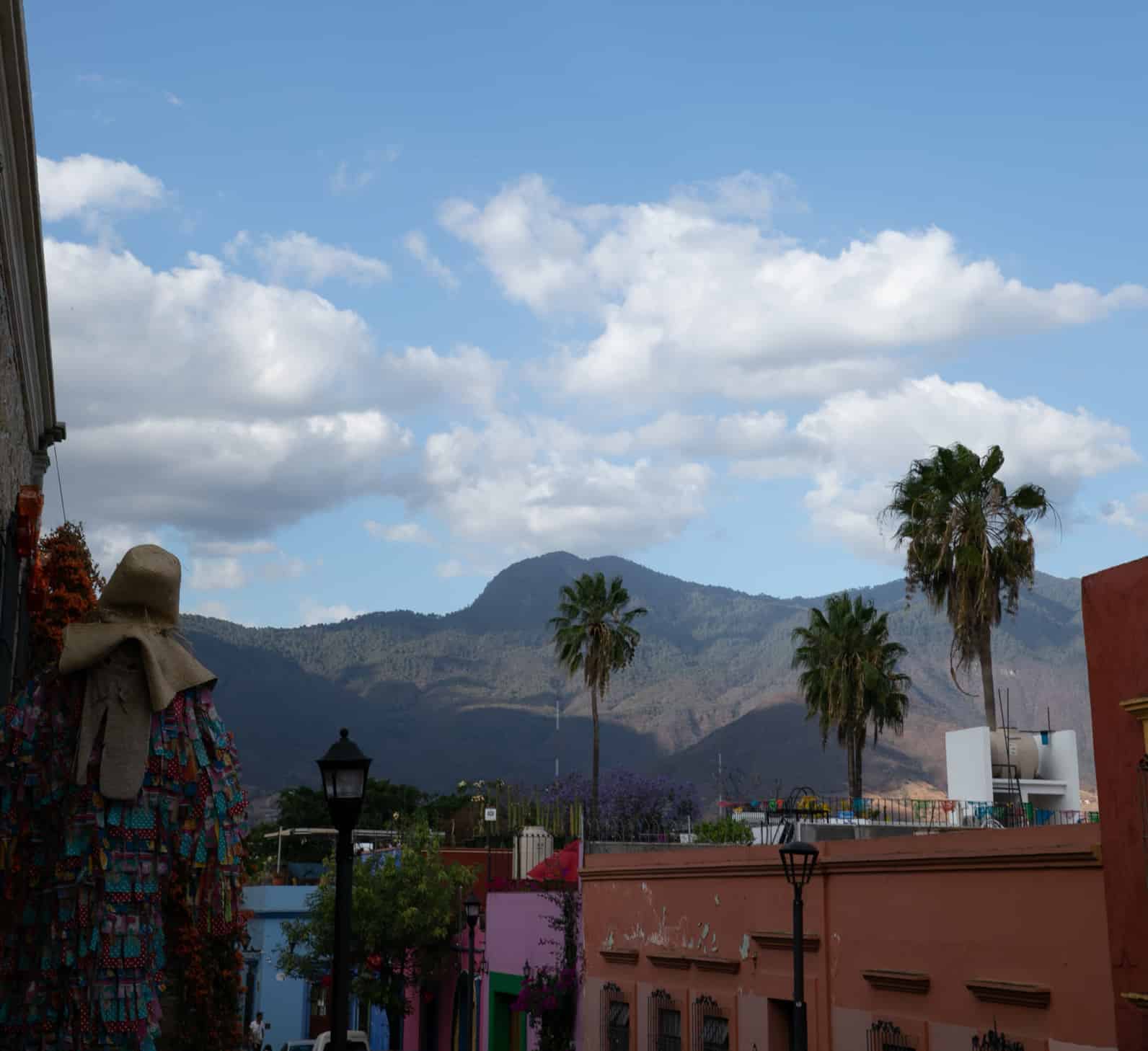
An altar for the feet.
I am Luna. I had a dream, and I want to share it with you. I went to the forest, and the trees told me that we had to find new paths. I want to tell you that the plants, animals, and birds spoke to me; their songs, murmurs, and whispers reminded me that we are alive.
I am Luna. In my dream, I spoke with silence, and it invited me to walk with light feet. I had to find a way to do it and, under the warm rain, I learned to listen to the wind, who said a word to me and told me its story; from that day on, I learned to walk the way silence had told me.
I, Luna, want us to seek together those paths that teach us to listen to the songs, murmurs, and whispers of living beings. We need to walk lightly so that our feet can breathe and walk new paths. I want to tell you that when I spoke with silence and when I listened to what the wind was telling me, I learned the word huarache, and I knew that its oldest echo is in the voice of the Purépecha.
I, Luna, want your feet to respect the Earth as an altar through which we must walk. For that, I looked for skilled artisans in Oaxaca. With them, we made the huaraches that help me bring men and women a message of hope, just like Hermes did many moons ago using his winged feet.
I, Luna; They, Baku and Mondo Experimental. We seek to give you a way of walking with light feet, as the Rrámuris and other peoples do when they walk with the wind and listen to nothing else but silence.
Process.
I.
Santa Catarina Cuixtla is a town located in the south of Oaxaca. If you want to get here by car, you must travel for two hours from the state’s capital. The green landscape of the Sierra Madre Occidental mountain range, with its hills and valleys, indicates that you have reached your destination.
The site is famous among Catholics thanks to a spring where it is believed that Jesus Christ appeared, an event that has put it on the map of hundreds of believers that arrive here year after year. According to the latest recorded data, around 1,500 people live here, some of whom work every day to keep alive some of Mexico’s crafts.
People like Jesús Arellanes Luna, craftsman and founder of Baku, a brand devoted to the creation of huaraches (a low-heeled sandal with an upper made of interwoven leather strips) that was created a couple of years ago. Huarache making is a craft that, in Jesus’ town is becoming extinct, as he recalls: “Until the eighties, there were about 10 families that were dedicated to this, but due to economic reasons most of them have left town: they migrated to Oaxaca and the tradition was lost. Today there are only two families here that are still dedicated to this craft”.
Jesus, however, was reluctant about the huaraches disappearing. With the help of his sister, his cousin, and his cousin’s wife, he reused a family’s old workshop and decided to keep the tradition alive: “We realized that we could do something interesting for the new generations,” he says.
In that place, the hands were then seen working again. Hands that used the same techniques passed down from generation to generation. That wasn’t the only thing that came back. The craftsmen took with them the same materials used in other times: tires, to give life to the soles; animal skin, to form the body of the shoe, tanned in a process made entirely with plants.
Although the use of fur might cause more than one to raise their eyebrows, Jesus emphasizes that it is a common resource in his town, part of their ancestors’ wisdom: “We use tigrillo and rabbit because they are the same animals that our ancestors used. Back in the days these animals would come down and eat the farms’ livestock, so it was a problem for the community. For that reason they have used them ever since.”
The tanning of this material is something that Jesus is also proud of, a process where the use of chemicals is avoided at all costs and that instead promotes the use of elements from Mother Nature: “We use cinnamon bark and a local bush called female xomatl; our suppliers are people concerned about not damaging the trees from which they obtain them. They know that they will use them again and they need them to be available when that happens”.
In just two years, Baku has made itself known beyond the borders of Oaxaca, largely thanks to social media and word of mouth from its customers. This is how the creations from Santa Catarina Cuixtla follow the steps of citizens from around the world. Rather than thinking about an expansion, what Jesús really cares about is maintaining the quality and artisanal processes of his firm. That each pair becomes a true exponent of the legacy of his ancestors’ craftsmanship.
II.
To trace Mondo Taller Experimental’s origin, one must travel to the city of Oaxaca. The place where Jimena Rangel followed the footsteps of Abigail, her grandmother, born in the town of Tezoatlán de Segura y Luna, and where she decided to learn how to create textiles.
With previous studies in Philosophy, Communication, and Art at universities in Paris and Milan, in Oaxaca, she immersed herself during a couple of years in the techniques of weaving on traditional Mexican loom. A couple of years ago, she created Mondo Taller Experimental, a space that is nowadays settled in Estado de México, and that allows her to explore the possibilities of natural fibers and dyes. Something that has become a way of life: “To me, knitting is a meditation; a way of being present; a ritual with nature through the materials I choose”, she recalls.
If textiles open the door to new possibilities, to talk about dyes —especially natural ones— is to talk about new dimensions, as she explains: “It’s really magical to see how you can mix materials like white wool with natural elements, such as herbs, plants, and seeds, and notice how suddenly a new color begins to appear…. It’s something that’s just amazing”.
Initially, Mondo Taller Experimental presented utilitarian pieces, an approach that Jimena changed soon after: “Currently I am focused on the artistic part of textiles. I experiment with sculptural figures, I do abstract things, I use the same procedures that I learned at the loom and with dyes but applied one hundred percent to art”.
Although there is always an exception to the rule…
III
In Loona’s Collaboration Three, “Mesura”, the roads of Baku and Mondo Taller Experimental coincide in a route where each step is nothing but firm: the road of sustainability.
To create this project —materialized in a series of huaraches presented in a bag created especially for the occasion— Jesús, Jimena and her collaborator, Rodrigo Chavez, worked for months to develop a piece that combined the best of their creative vision.
Each of the huaraches is made entirely by hand. Baku uses old tires (a way of recycling a material that on other occasions would be considered as waste) which are cut, blade in hand, in the workshop to obtain the soles that will be used in the final pieces.
For their part, Jimena and Rodrigo, from Mondo Taller Experimental, focused on creating strips made with natural wool, woven on a pedal loom, which are used in the upper part of the shoe.
The dyes they have developed for the project deserve a special mention. Each piece acquires its color thanks to the avocado pits, in an extraction process that lasts a couple of weeks and where it’s necessary to leave the material in water at different temperatures until, little by little, it releases a distinctive yellow-marrow hue.
For Baku, working with a material such as textiles represented a first time: until this occasion the firm’s pieces had been made exclusively with leather. “It was a real challenge to integrate the textile strips into the shoe because we had never done it before”, says Jesús, “Fortunately, Oaxaca is a place with a great textile tradition, so there were a couple of people able to help us solve it and, after several tests, we succeeded”.
The final result also has a distinctive presentacion: each pair comes inside a bag created from the same wool used in the huaraches, a piece that will live outside of the closet, as Sharon Drijanski, Loona’s founder, explains: “We never use labels, cards, paper, or anything like that; each collaboration comes with a sustainable packaging. This time it is a shoe bag that is so well made that people will want to use it for many other things”.
Mesura’s story is a story of several roads that come together. When this happens, usually the final destination is unknown. In this case, there is no doubt about the direction we’re going: the road of sustainability. A path that allows you to take care of the planet, one step at a time
Collaborators
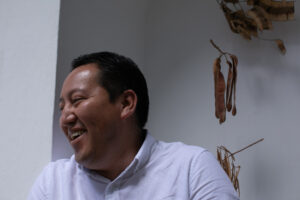
Baku
In Zapotec the name of this brand, founded in 2018, means “altar”, and each pair of the huaraches that Jesús Arellanes Luna and his family create in their workshop in Santa Catarina Cuixtla, Oaxaca, honors the tradition and legacy of their ancestors. Shoes that keep alive a craft passed down from generation to generation and that also display a contemporary vision of design.
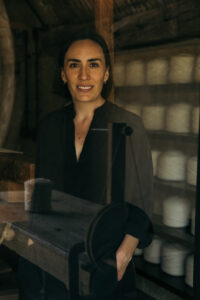
Mondo Experimental
In this project, Jimena Rangel explores the artistic possibilities of natural textiles and dyes. Her works are crafted in traditional Mexican loom and in Japanese Saori loom. In her pieces, she only uses natural fibers and dyes extracted from plants, fruits and seeds. Prior to this, Jimena studied Philosophy, Communication and Art and Design at universities in Paris and Milan. In Mondo Taller Experimental she is accompanied by her collaborator, Rodrigo Chávez.
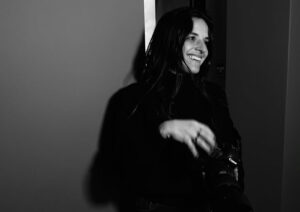
Karla Lisker
Photographer Karla Lisker always meets her passion when it comes to working. With studies in Marketing from the Universidad Iberoamericana in Mexico City and a specialty in photography from the Academy of Visual Arts (AAVI), Karla is currently one of the most outstanding fashion photographers in Mexico. The stories that she creates with her camera appear frequently in important magazines such as Vogue, Elle and L’Officiel.
Shop the Current Collection
Baku + Mondo Experimental Mesura Huaraches
Mesura
Handcrafted Huaraches from Santa Catarina Cuixtla, Oaxaca.
The sole is made from recycled truck tires.
The sole and the back strap have recycled leather, tanned through a process that involves only plants from the region (female zomacle, and cinnamon tree bark).
The top strip is crafted in State of Mexico and is made of natural wool, woven on a pedal loom, and dyed with avocado pit.
Each pair is presented in a bag made of natural wool, woven on a pedal loom, and dyed with avocado pit.
Limitted Edition.
© Loona 2021 | Todos los derechos reservados | [email protected]



















